News & Updates
Lotus - A trusted name in family travel
Yunnan Province
 Far away from the smog and crowds of China’s east coast cities is Yunnan Province. “Yunnan” means “south of the clouds”. Yunnan is mountainous throughout with more than 600 rivers and is geographically diverse, with the Tibetan plateau in the north and west, and subtropical lowlands to the south. The southern part of Yunnan is influenced by its proximity to Laos and Burma. The eastern half of the province is a limestone plateau with karst scenery and unnavigable rivers flowing through deep mountain gorges. The western half is characterized by mountain ranges and rivers running north and south. Yunnan has been called a natural zoological and botanical garden.
Far away from the smog and crowds of China’s east coast cities is Yunnan Province. “Yunnan” means “south of the clouds”. Yunnan is mountainous throughout with more than 600 rivers and is geographically diverse, with the Tibetan plateau in the north and west, and subtropical lowlands to the south. The southern part of Yunnan is influenced by its proximity to Laos and Burma. The eastern half of the province is a limestone plateau with karst scenery and unnavigable rivers flowing through deep mountain gorges. The western half is characterized by mountain ranges and rivers running north and south. Yunnan has been called a natural zoological and botanical garden. 
The province is famed for its multitude of ethnic groups, whose diverse customs can still be seen today. Of China's fifty-five officially recognized ethnic minorities, twenty-five can be found in Yunnan. From ancient times the Chinese invaders gradually pushed indigenous people into mountain locales where today, they retain their distinct languages and cultures. The Miao, Yao, Lolo, Lao, Shan, Thai, and Lisu are some of the larger tribes; there is also a considerable Tibetan minority. Almost 40% percent of Yunnan’s population is part of a minority group.
Some of the highlights if you are visiting this province could include:
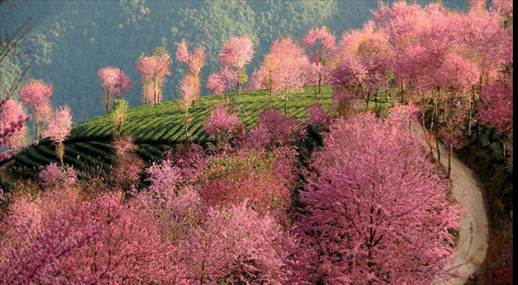 Kunming - the provincial capital is nicknamed "Spring City". Kunming is well-known for its beautiful landscape, agreeable climate and fresh flowers blooming throughout the year. Here more than 400 types of flowers are blossoming and competing with each other for beauty and fascination. Of these flowers, camellia, yulan magnolia, azalea, fairy primrose, lily and orchid are known as the six famous flowers of city. During the springtime, when the cherry blossoms are in bloom, it is like a paradise to visit and capture the view from Yuantong Park. It is the most popular park in the city, particularly in springtime. It is customary for locals to climb Yuantong Hill in order to find incredible views. One can feel lost in a world of flowers, as there is an 11 square mile area filled with millions of cherry and crabapple blossoms forming a pink sea of color.
Kunming - the provincial capital is nicknamed "Spring City". Kunming is well-known for its beautiful landscape, agreeable climate and fresh flowers blooming throughout the year. Here more than 400 types of flowers are blossoming and competing with each other for beauty and fascination. Of these flowers, camellia, yulan magnolia, azalea, fairy primrose, lily and orchid are known as the six famous flowers of city. During the springtime, when the cherry blossoms are in bloom, it is like a paradise to visit and capture the view from Yuantong Park. It is the most popular park in the city, particularly in springtime. It is customary for locals to climb Yuantong Hill in order to find incredible views. One can feel lost in a world of flowers, as there is an 11 square mile area filled with millions of cherry and crabapple blossoms forming a pink sea of color.
Green Lake Park is a central and major park in Kunming and is primarily a lake surrounded by greenery. It has a large and elaborate network of waterways and winding paths, with broad, lotus-covered pools and overhanging willows. It is a place where thousands exercise, do tai chi, sing and feed the flocks of birds. Located in the west side of the park is the statue of one of Yunnan's most famous patriots – Nie Er, who was the composer of China's national anthem. Other parks in Kunming include Black Dragon Pool and the Kunming Botanical Gardens in the north.
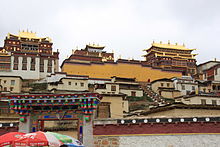 Shangri-La (formerly Zhongdian) was renamed in 2001 after the fictional land of Shangri-La from the novel “Lost Horizon”. Many travelers use the town as a gateway into Tibet, either travelling several days by jeep to Lhasa, or by flying from the city's airport. Visitors, who wish to go “off path” can make Shangri La their base to explore both Tibet and Yunnan. Shangri-La is near to the The Ganden Sumtseling Monastery (sometimes called the little Potala Palace), the Pudacuo National Park and Tiger Leaping Gorge in Yunnan.
Shangri-La (formerly Zhongdian) was renamed in 2001 after the fictional land of Shangri-La from the novel “Lost Horizon”. Many travelers use the town as a gateway into Tibet, either travelling several days by jeep to Lhasa, or by flying from the city's airport. Visitors, who wish to go “off path” can make Shangri La their base to explore both Tibet and Yunnan. Shangri-La is near to the The Ganden Sumtseling Monastery (sometimes called the little Potala Palace), the Pudacuo National Park and Tiger Leaping Gorge in Yunnan.
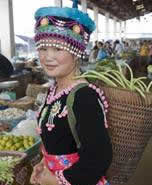 Puacuo National Park is a 500 square mile national park and contains the Three Parallel Rivers Park is only about a 50 minute drive from Shangri-La. It encompasses the near-meeting points of three of Asia’s – and the world’s — great rivers: the Jinsha, Lancang and Nu, which eventually become the Yangtze, Mekong and Salween respectively. Although the mouths and headwaters of these rivers are all quite distant, for a brief period they gravitate towards each other and then run parallel for roughly 100 miles before diverging into different seas. Also the Three Parallel Rivers Park is where southern Asia, eastern Asia and the Tibetan Plateau come together with deep, near-sunless gorges, mighty rivers and snow-capped peaks. The spectacular terrain has historically meant tough travel, and the subsequent isolation experienced by its inhabitants has preserved its cultural diversity. The park is home to the Naxi people, as well as the Li, Nisu and a handful of others.
Puacuo National Park is a 500 square mile national park and contains the Three Parallel Rivers Park is only about a 50 minute drive from Shangri-La. It encompasses the near-meeting points of three of Asia’s – and the world’s — great rivers: the Jinsha, Lancang and Nu, which eventually become the Yangtze, Mekong and Salween respectively. Although the mouths and headwaters of these rivers are all quite distant, for a brief period they gravitate towards each other and then run parallel for roughly 100 miles before diverging into different seas. Also the Three Parallel Rivers Park is where southern Asia, eastern Asia and the Tibetan Plateau come together with deep, near-sunless gorges, mighty rivers and snow-capped peaks. The spectacular terrain has historically meant tough travel, and the subsequent isolation experienced by its inhabitants has preserved its cultural diversity. The park is home to the Naxi people, as well as the Li, Nisu and a handful of others.
Tiger Leaping Gorge
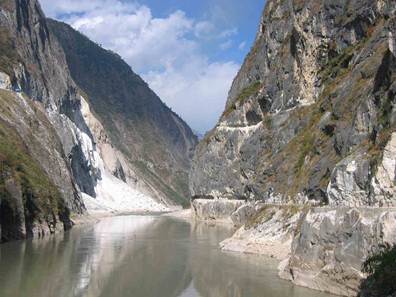 The most well-known area of the park is Tiger Leaping Gorge, one of the deepest gorges in the world and the site of one of China’s most popular treks with a great diversity of landscapes. The trail snakes along vertical cliffs and through small villages, while the Jinsha River rushes far below. The snow covered peaks of Jade Dragon Snow Mountain and Haba Snow Mountain shadow either side of the gorge. Typically the hike is spread over two days but a slower pace will afford you the time to contemplate the natural surroundings and stay in the villages along the way. People who trek through this region say they often feel as though time is standing still. It is normal to see a group of small goats travel along, herded by a person carrying a walking stick or someone carrying a basket of goods. If you prefer to visit without any (strenuous) hiking, a road along the south side of the gorge enters from the west and goes for a couple kilometers before stopping at a parking lot. After that there is a fairly level paved trail to Upper Tiger Leaping stone.
The most well-known area of the park is Tiger Leaping Gorge, one of the deepest gorges in the world and the site of one of China’s most popular treks with a great diversity of landscapes. The trail snakes along vertical cliffs and through small villages, while the Jinsha River rushes far below. The snow covered peaks of Jade Dragon Snow Mountain and Haba Snow Mountain shadow either side of the gorge. Typically the hike is spread over two days but a slower pace will afford you the time to contemplate the natural surroundings and stay in the villages along the way. People who trek through this region say they often feel as though time is standing still. It is normal to see a group of small goats travel along, herded by a person carrying a walking stick or someone carrying a basket of goods. If you prefer to visit without any (strenuous) hiking, a road along the south side of the gorge enters from the west and goes for a couple kilometers before stopping at a parking lot. After that there is a fairly level paved trail to Upper Tiger Leaping stone.
The Red Earth of Dongchuan
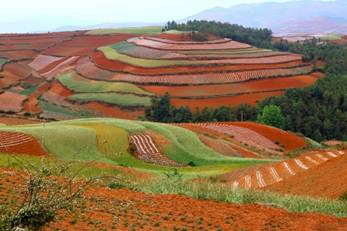 Dongchuan Red soil, is a rural place in the Wumeng Mountainous area, about 180km north of Kunming. Dongchuan became famous in the mid 1990’s when Chinese photographers came to this area and discovered the incredible scenery. The first photographers who came here publicized the award-winning photos, but kept the location a closely guarded secret. Eventually the locale became known and more photography buffs make the trip into the mountains to capture their own breath taking photos. The best time for photography there is from mid-May to early-June and from mid-October till November each year. Different seasons offer different photo opportunities. In summer, the potato flowers blossom white and wheat is golden ripe. In the autumn there are parts of the red land that are plowed, while others are covered with green barley or wheat or other crops. According to locals the third day after rain offers the most beautiful view. The wet earth with clear sunshine makes the colors more dramatic with the bluest sky. If you are lucky you can see the rainbow after a rain shower and it clearly illuminates the red land. The combinations of brilliant red soil, yellow buckwheat and the dramatic skies make the region around Dongchuan a paradise for photographers.
Dongchuan Red soil, is a rural place in the Wumeng Mountainous area, about 180km north of Kunming. Dongchuan became famous in the mid 1990’s when Chinese photographers came to this area and discovered the incredible scenery. The first photographers who came here publicized the award-winning photos, but kept the location a closely guarded secret. Eventually the locale became known and more photography buffs make the trip into the mountains to capture their own breath taking photos. The best time for photography there is from mid-May to early-June and from mid-October till November each year. Different seasons offer different photo opportunities. In summer, the potato flowers blossom white and wheat is golden ripe. In the autumn there are parts of the red land that are plowed, while others are covered with green barley or wheat or other crops. According to locals the third day after rain offers the most beautiful view. The wet earth with clear sunshine makes the colors more dramatic with the bluest sky. If you are lucky you can see the rainbow after a rain shower and it clearly illuminates the red land. The combinations of brilliant red soil, yellow buckwheat and the dramatic skies make the region around Dongchuan a paradise for photographers. 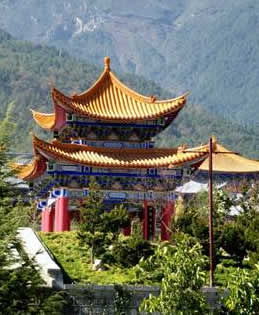
Dali is known as backpacker central and is considered a hippie's heaven. It has a section of the city that is an ancient walled city. Dali is one of the most popular spots for independent China travelers. Dali Old Town is known for its traditional architecture, minority cultures (mostly Bai but also with many Yi and Hui) and simply a place to relax. The Old Town has a population of 40,000. When discussing Dali, it is important to be clear whether you are talking about the entire city or just the Old Town. With the beautiful Cangshan Mountains a short distance to the west of Dali Old Town and Erhai Lake a few miles east, it has a perfect natural setting. The climate is temperate with moderate summers and mild winters, though it can get windy in autumn and winter. Despite its fame as a backpacker heaven, Chinese tourists outnumber foreigners. Chinese tourists tend to stay in nearby Xiaguan Town so Dali becomes thankfully quiet in the evenings. Dali has recently been overshadowed by nearby Lijiang, and many foreign tourists bypass it.
Local Specialty
 Pu-erh tea comes from the Yunnan Province and is famous worldwide. Pu-erh tea is traditionally made from old wild trees known as old broad leaf tea. These trees can also be seen bordering tropical regions in Laos, Burma, Vietnam, and eastern parts of India. Pu-erh tea is the only tea which is intentionally aged - all the other types of tea are better when fresh. Pu-erh tea is made from a variety of fermented dark tea unique to Yunnan. Fermentation is a type of tea production in which the tea leaves undergo microbial fermentation and oxidation after they are dried and rolled. This process is a Chinese specialty. It has been popular in China for 1700 years. Accounts of the health benefits and medical use of Pu-erh tea has been referenced in various ancient scripts throughout Chinese history. For centuries it was given as a tribute to the Emperor and high ranking officials within the Imperial Courts of China. Its high value and many health benefits lead to high demands and the frequency of the tributes gave it the title “Tribute Tea”.
Pu-erh tea comes from the Yunnan Province and is famous worldwide. Pu-erh tea is traditionally made from old wild trees known as old broad leaf tea. These trees can also be seen bordering tropical regions in Laos, Burma, Vietnam, and eastern parts of India. Pu-erh tea is the only tea which is intentionally aged - all the other types of tea are better when fresh. Pu-erh tea is made from a variety of fermented dark tea unique to Yunnan. Fermentation is a type of tea production in which the tea leaves undergo microbial fermentation and oxidation after they are dried and rolled. This process is a Chinese specialty. It has been popular in China for 1700 years. Accounts of the health benefits and medical use of Pu-erh tea has been referenced in various ancient scripts throughout Chinese history. For centuries it was given as a tribute to the Emperor and high ranking officials within the Imperial Courts of China. Its high value and many health benefits lead to high demands and the frequency of the tributes gave it the title “Tribute Tea”.
In one study in laboratory animals, pu-erh tea was the only kind of tea which could actually raise the level of good cholesterol (HDL) and lower the level of bad cholesterol (LDL.) It is often referred to as the “Wonder Tonic” and the “Medicinal Tea”. Pu-erh tea is believed to have wide ranging health benefits from anti-aging, prevention of heart disease and cancer, diabetic control, removal of toxins to curing dysentery, inflammation, aiding digestion and weight loss, as well as blood circulation. In fact, Dr. Oz, the famed television doctor in the US, touted benefits of Pu-erh tea as a weight loss aid in a November 2012 airing.
Unique Holiday
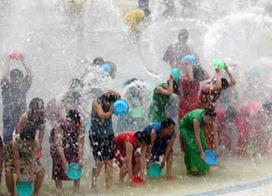 Xishuangbanna is a region in southernmost section of Yunnan and is home to an array of ethnic minorities with close links to their cousins across the borders in nearby Laos, Myanmar, and Thailand. For someone interested in interacting directly with the Dai ethnic minority of Xishangbanna Prefecture in an informal and fun-filled manner, the annual Water Splashing Festival is the perfect occasion. Celebrated from 13-15 April, the festival marks New Year for the Dai ethnic minority, who make up one-third of the population of the region.
Xishuangbanna is a region in southernmost section of Yunnan and is home to an array of ethnic minorities with close links to their cousins across the borders in nearby Laos, Myanmar, and Thailand. For someone interested in interacting directly with the Dai ethnic minority of Xishangbanna Prefecture in an informal and fun-filled manner, the annual Water Splashing Festival is the perfect occasion. Celebrated from 13-15 April, the festival marks New Year for the Dai ethnic minority, who make up one-third of the population of the region.
Before the festival, pigs and chickens are slaughtered and wines are brewed with other foods also being prepared beforehand. For the first two days the festival is comparatively restrained. People wear their best clothes, while older women in the nearby villages put on traditional costumes, such as printed sarongs and black headdresses decorated with silver jewelry, and gather with their families before visiting Dai temples and monasteries. There, they wash the statues of Buddha with water, a practice known as ‘Bathing the Buddha’.
Travel Tips- Customs to Consider
Respect local customs and traditions. Many inhabitants of Yunnan are minority peoples with a wide variety of beliefs and traditional rules. In order to respect the tradition and custom of local people, please remember the customs listed below:
- Do not enter the room of a pregnant woman.
- Do not walk over or stand astride the fire pit when visiting a Yi nationality' family.
- Do not touch the head of a monk.
- Do not stand on the threshold when visiting a Tibetan family.
- Do not enter the bedroom of the host.
- Take off your shoes when visiting temples or Dai nationality bamboo buildings.
The Water Splashing ceremony, however, is more than just good-natured fun. It also contains a religious element. Water is regarded by the Dai as a symbol of religious purity and also of goodwill among people. Therefore, splashing a fellow human being with water during the Water Splashing Festival, whether a close neighbor or a fellow villager, or even a stranger, is an expression of the desire for good luck and prosperity to that person. Once the festival finishes, life in Xishuangbanna returns to its normal sleepy state. Treks into the countryside offer the chance to meet not just the Dai, but the Wa, Jinuo, Hani and the Bulang minorities, all of whom have their own languages and customs.
Yunann province has many unique characteristics to offer and is a highly appealing place to visit, particularly in the summer, when other China southern locations may be very hot. The climate and location of Yunnan offers many wonderful places to visit and explore, particularly if you wish to visit locales that are “off the beaten path.” Contact us at info@lotustours.net to for questions or to get started!
Sources: www.lotustours.net, Lonely Planet Guides, Wiki Travel, personal interviews of Lotus staff, and internet sources